Mother Jones Monument - Union Miners Cemetery
Introduction
Text-to-speech Audio
Images
Overview: This map is also available at http://www.motherjonesmuseum.org/wp-content/uploads/2018/12/UnionMinerCemetery-12-10_Page_1.jpg, designed by Kate Klimut. A fuller tour will also be available there by January 2019
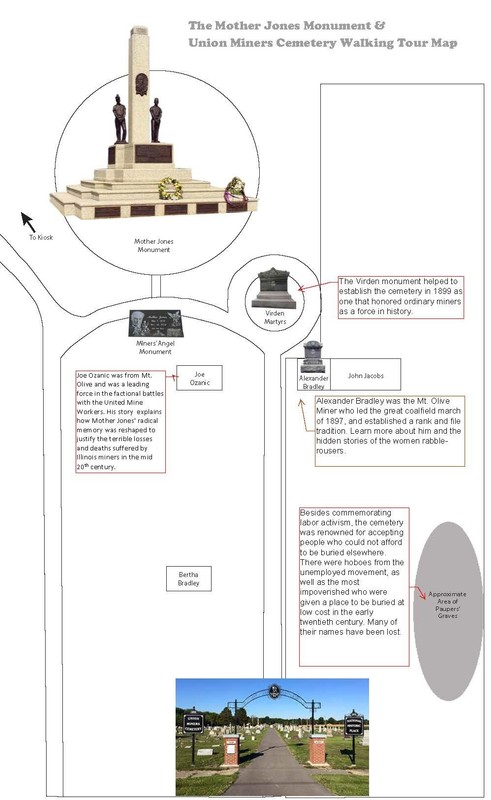
Overview: Imagine 50,000 people attending the unveiling of the Mother Jones Monument, and you come close to understanding what a powerful moment this was for mining families.
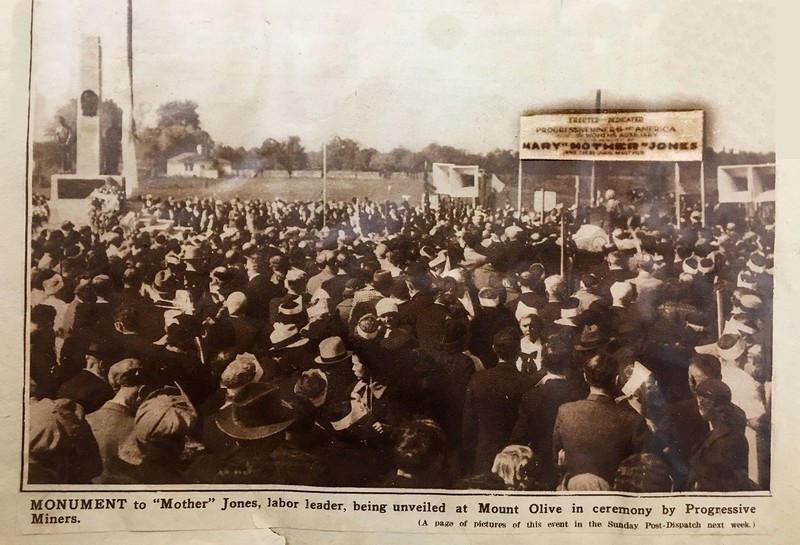
Monument dedication: Another image of the crowd anticipating the unveiling of the Mother Jones Monument October 1936.
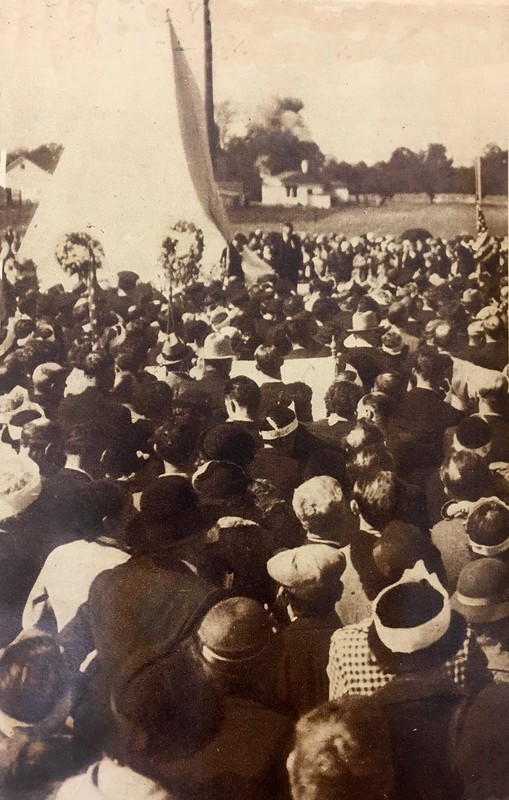
This image is looking west from Alexander Bradley's grave. At the right in the background you will see the Virden monument. The cross is where Jones was originally buried at her request.
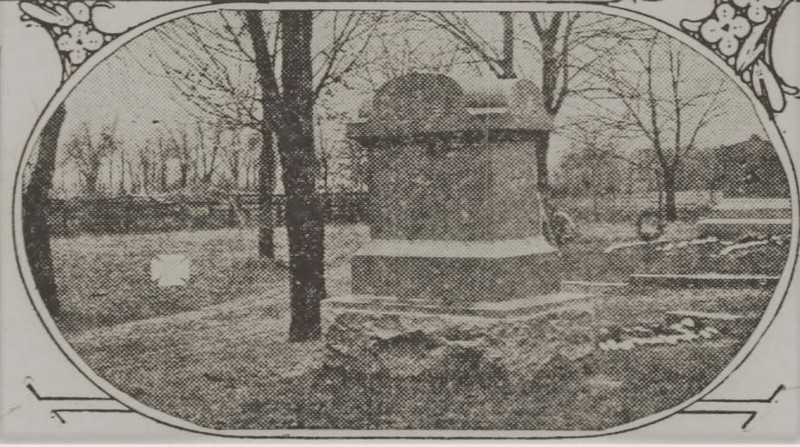
Alexander Bradley.was the Mt. Olive Miner who led the 1897 miners march to shut down the mines, a strike that brought about the 8 hour day. It was a catalyst for shutting down all the coal mines in the state. Bradley had entered the mines as
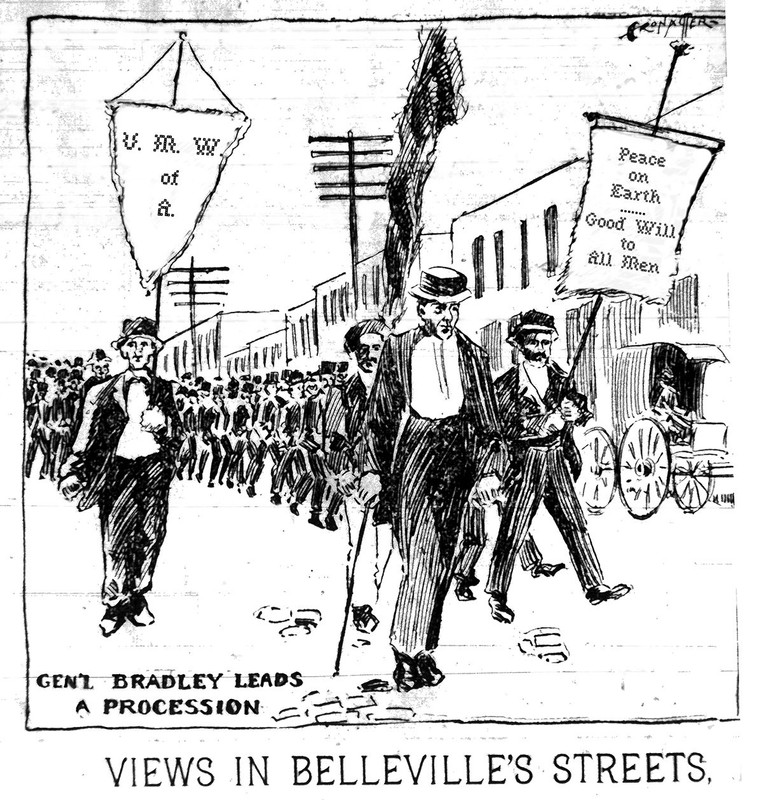
Alexander Bradley's mother was a militant activist as well. Yet her story has been forgotten, as has most of the women who fought in the coal fields. The story connects to the establishment of the Union Miners Cemetery.
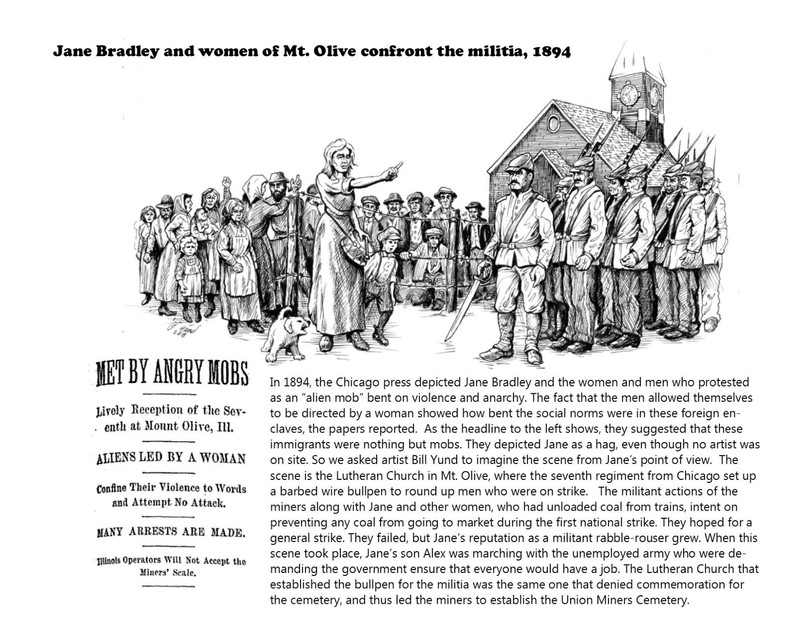
Bradley, 1897, after the great strike. He loved this image of himself as the dapper young man of substance. It suggested that miners who dug the coal that fueled the nation deserved the finer things in life.
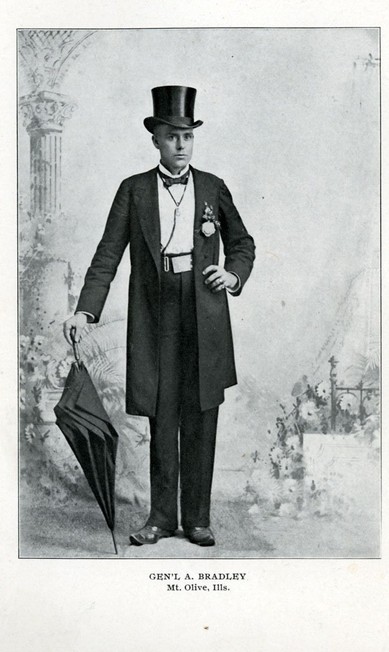
This telegram was sent by Alexander Bradley from Virden in the midst of the battle in 1898.
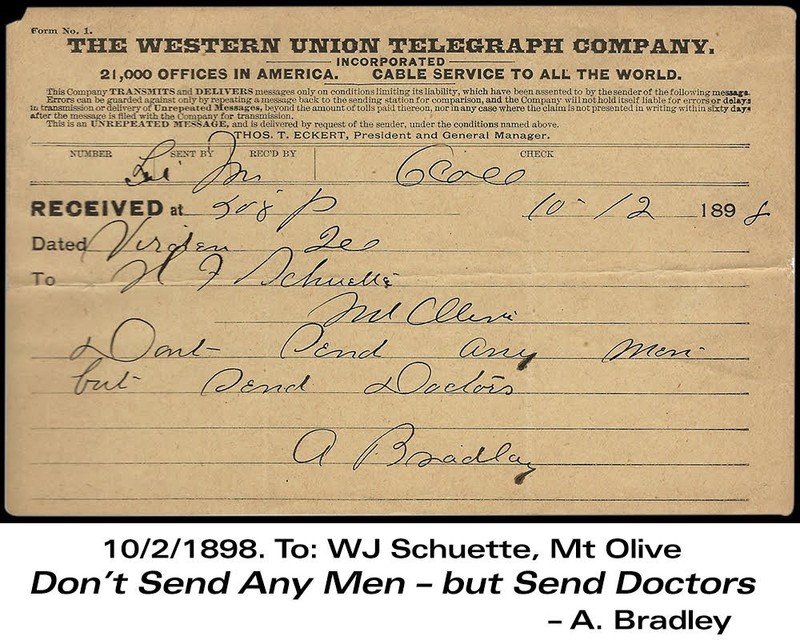
Mother Jones asked to be buried next to the Virden martyrs who had sacrificed their lives for the union cause. Honoring the martyrs started the tradition of celebrating the role of the rank-and-file worker in changing history.
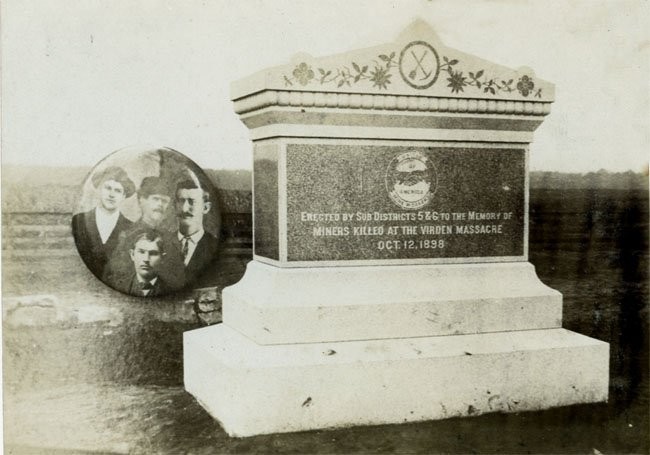

The October 12, 1898 headline of a Chicago paper. As it turned out, 13 died; 8 of them were miners, and the rest were guards. This was a battle against paid company mercenaries and unionists. Mt. Olive volunteers played a central role
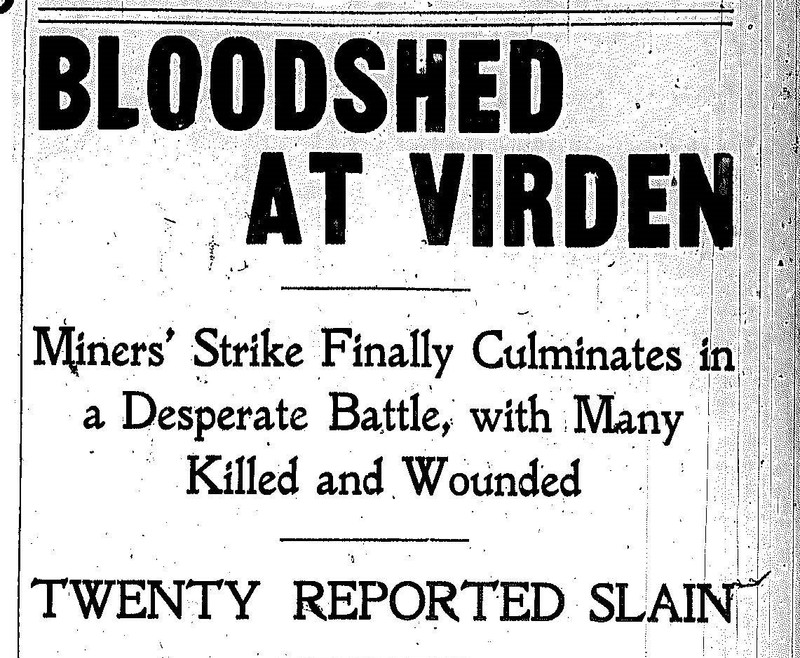
The determination of the Mt. Olive local to lionize and commemorate the miners who had given their lives for the union was a first in U.S. history, in that it emphasized the ordinary miner and rank-and-file role in changing the course of history.
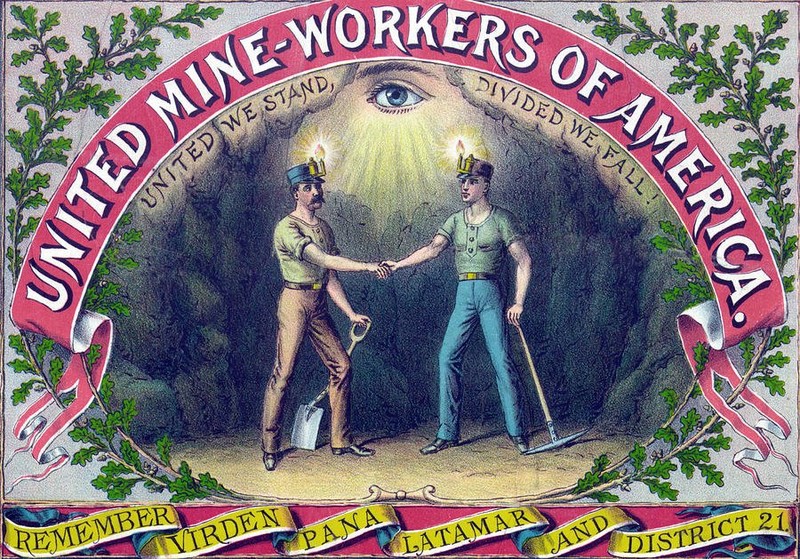
Jack Battuello, pictured in a sit-down in the Wilsonville mine in 1937, tells of the meaning of the Virden martyrs.
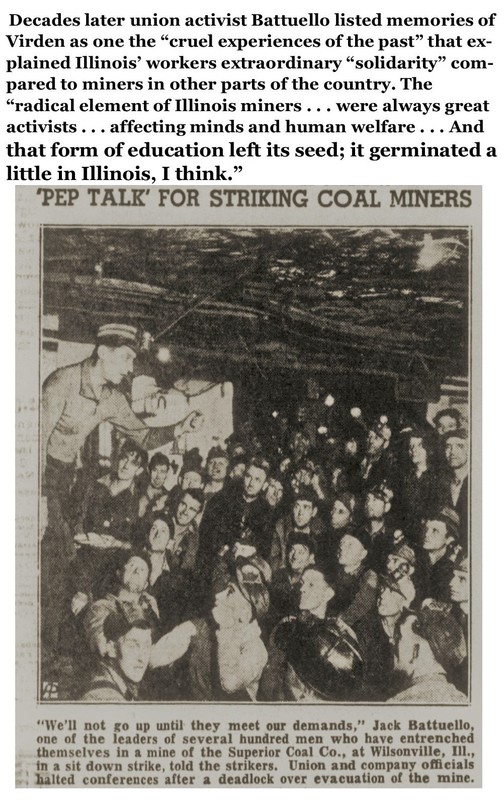
Angel Monument
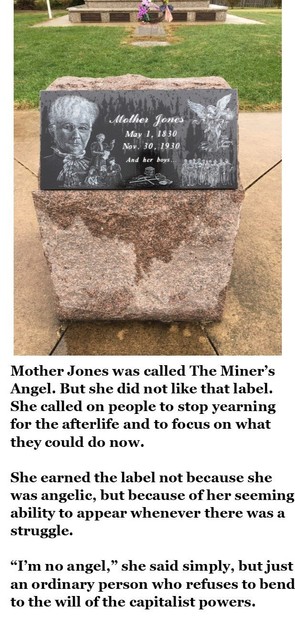
Originally the top area of the monument was conceived as a speakers' platform, for thousands of people. But the decline of mining and the loss of PMA to the UMWA led to the monument's decline as a base for universal uprising or memory formation.
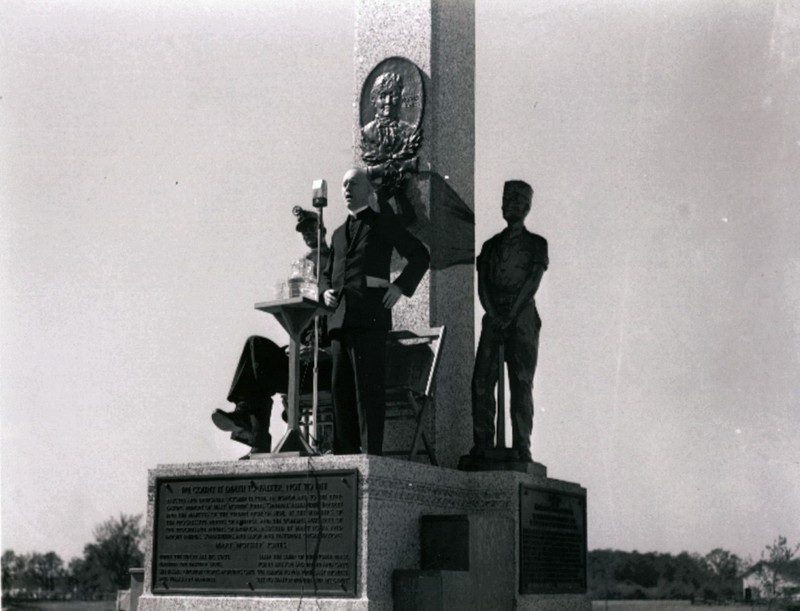
more detail on the PMA martyrs listed above, who were killed during the 1930s mine war. By the time that the monument was built in 1936, it was a tribute to the factional warfare and "clean unionism."
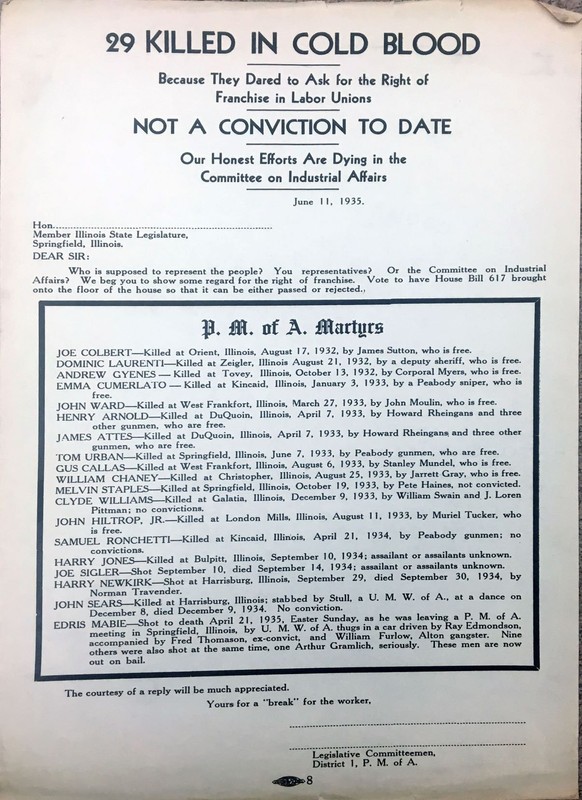
Backstory and Context
Text-to-speech Audio
Mother Jones was a legend in her own time--a tiny steel-blue-eyed woman who conjured courage in working-class people to take on the corporate “pirates.” There was truth to this legend. Jones faced down bayonets, stared fearlessly into the eyes of the coal operators’ hired guns, and defied troops sent to subdue the immigrant working class. She became a legend by organizing entire communities. She inspired people to fight, to resist, to refuse.
In 1901, when young
textile children in New Jersey launched a strike, they expected Mother Jones to
appear over the hills: “They say that strikers always win when they have Mother
Jones to help them,” they vouched. In looking for Mother Jones, they found the
power of collective action, the legend in themselves. The legend only deepened
when Jones fearlessly took on the challenge of organizing West Virginia. She
became known as The Most Dangerous Woman in America.
